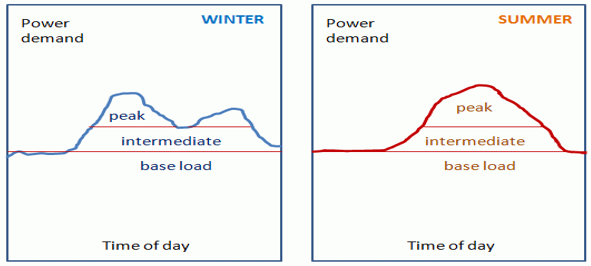Baseload power refers to the minimum amount of electric power needed to be supplied to the electrical grid at any given time. Day to day trends of power usage need to be met by power plants, however it is not optimal for power plants to produce the maximum needed power at all times. Therefore there are baseload power plants like coal-fired power plants which provide the minimum needed electricity, and peaking power plants which meet the fluctuating needs. Demand for electricity fluctuates vastly throughout a day, so baseload power is not necessarily enough. The grid requires the use of peaking power, which is electricity supplied to match the varying demand in electricity. (read more here)

Baseload power must be supplied by constant and reliable sources of electricity. They are sometimes dispatchable as well, in order to cover for unreliable intermittent electricity sources. Power plants that provide baseload power often run year round – therefore having a high capacity factor – and use non-renewable fuel. Some baseload power plants include coal-fired power plants and nuclear power plants.
Base load power sources are the plants that operate continuously to meet the minimum level of power demand 24/7. Base load plants are usually large-scale and are key components of an efficient electric grid. Base load plants produce power at a constant rate and are not designed to respond to peak demands or emergencies. The base load power generation can rely on both renewable or non-renewable resources (read more here)
Example:
Let’s assume that the electrical grid is a big household. Under normal circumstances, the power required by the electrical grid is fairly constant during various period of the day. This constant power, which is required at all times, is called the base loading.
Power plants that generate the base load and feed it into the power grid are also called base-load power plants. The power plants for generating the base load are in operation almost 24 hours a day.
But where does the base load actually come from? The base load is mainly generated by consumers that are in use around the clock – for example, refrigerators or standby devices. However, there are also devices and systems outside of private households that are constantly in operation and thus increase the base load, for example the railroad or production facilities in factories.


